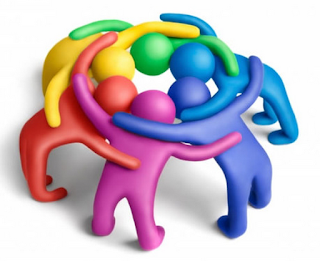Children Globally Need Access To Healthy Water
Generally
speaking, children need healthy water in order to thrive, water is needed for
our organs to function properly, children need proper brain function for learning,
children need to live in clean sanitary conditions in order to live healthy,
and without diseases related to water, but most of all children miss school,
and some do not live long enough to make it to school because they die before
age five due to contaminated water .
Nonetheless, it imperative to me that children have decent hygiene and hand
washing techniques in order keep them from spreading killer germs to each other.
Children and parents also need the use of sanitary toilets, to keep from
distributing diseases others, especially for young females. In
addition, girls are more likely to pick up diseases from contaminated toilets,
than males.
In
developing countries children do not have access to clean water. One in five children die from diseases, that water carries. Seven
hundred and eighty three million people do not have access to clean water, and thirty-seven
percent of these people live in Sub-Sarah Africa. Statics state that worldwide
one and nine people have no prospects of drinking clean water. A multitude of school days are null and void
every year due to water being unsanitary and having water related diseases that can exterminate or cause illnesses that cannot be cured.
It
also states that part of the worlds hospitals are filled with people who are
sick with diseases of contaminated water. In the worlds developing countries
females below the age of 15 are twice as probable as boys to be the in charge
of getting water for their family and the Jerry cans weight, is at least 40
pounds. Sanitation in these countries are linked to 80 percent of
sicknesses due to poor water conditions. Schools have no running toilets and
clean water, so females drop out when they reach the puberty stage,
which is unfortunate. Internationally, seventy percent of the water supply is
used for irrigation and farming only ten percent for local domestic, a small
amount of people in Sub-Saharan Africa have use of a suitable toilet
facilities. Furthermore, people who live in country regions predominately from
end to end, mostly live in a continuation of food production. Still, 84 percent
have no access to better quality water.
According
to the World Health Organization for every one dollar dedicated to healthy
water there is a monetary return between three dollars and thirty-four dollars.
Moreover, investing in safe water helps children globally gain improvement of
more than 413 million days of good health. Studies show that for every ten
percent of growth in female’s literacy affects the entire economy and can
increase up 0.3 percent (The Water Project, 2014) .
Press
Release with new information on healthy water: Raising Clean Hands: Advancing
Learning, Health and Participation through WASH IN SCHOOL (UNICEF, 2016) . WASH IN SCHOOLS is a project hosted by
UNICEF in which policy makers now have to provide sanitary conditions. Still,
it is difficult for politicians, school administrators and communities in other
countries. Sixty countries were surveyed, but only thirty-three delivered accurate
information. Major changes have been made to protect the welfare of children in
schools. Now, millions of children are being served safe clean water, clean facilities,
and are being educated about the importance of hygiene (Unicef, 2016) .
Sharing
information with colleagues can impact my future because they may not know
about joining UNICEF, or how to or join the Health Organization. I also donate
money to the Water Project and UNICEF but I also purchased a kit to take to the
next Family Daycare Homes and Home Centers meeting. Hopefully we can start our
own Fundraiser’s for the purpose of these developing countries, and donate all
proceeds to the Water Project, UNICEF, and other projects involved in promoting clean and healthy water for developing countries.
References
The Water Project. (2014, August 12). Statistics of
the Water Crisis. Retrieved from Facts About Water:https://thewaterproject.org/water_stats
Unicef. (2016, May 12). Lack of safe water and
sanitation in schools affects children’s learning – and their lives.
Retrieved from Press Release:
http://www.unicef.org/media/files/raisingcleanhands_2010.pdf


Wow! What a powerful blog post. I loved reading about The Water Project and all of the water crises in which they address. You are a wonderful advocate to children who do not have access to clean water. After reading your post, I became more intrigued with the "Wash in School" program. What a wonderful way to help children in need. Thank you for your post.
ReplyDeleteLogan
This is an awesome post, I never thought about the water project and its impact on children.
ReplyDelete